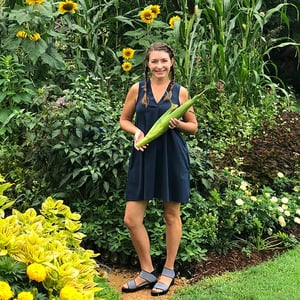
Summer Evaluations - The Best and Worst of Summer 2020
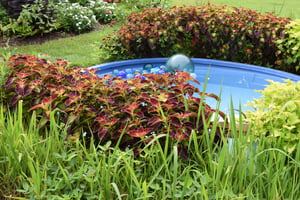
It's Brie the Plant Lady here. Happy autumn everyone - even if it still feels like summer! Here in central North Carolina the equinox marks a change in light, but generally not a transition in temperatures. As the garden slowly transitions to a new season, now is the perfect time to evaluate what worked and what did not, so I can plan for 2021.
This summer was different from any other - I was HOME the entire time! Never in my adult life have I spent more time at home. Of course, there is good and bad that comes with such a sudden change in career and lifestyle. But the garden has looked great and I have had the opportunity to make some big changes.
Before I share the successes and missteps of this summer’s garden, I want to talk about annuals and perennials.

MYTH: It is always better to plant perennials rather than annuals.

My first “real” job in horticulture was working at an enormous floriculture greenhouse just north of Indianapolis. This is where millions of mums, poinsettias, Easter lilies, and bedding annuals were born and raised, before shipping out to box stores around the Midwest. From that moment on, I developed a deep love for “annuals”, aka plants that die every year.
Fast forward 10 years to when I became the production manager at Plant Delights Nursery, a world-renowned source of rare perennials, you know, the plants that are supposed to live forever. The mantra “friends don’t let friends buy annuals” was printed on t-shirts and I started to question my adoration of seasonal plants like sunflowers and violas.
What are the advantages and disadvantages to each? And is it fair to love or hate plants from either category?
Annuals
An annual is a plant that completes its full lifecycle in one growing season. This means it germinates, grows, flowers, sets seed, and dies all in a period of a few months. This category includes most vegetables and many familiar garden favorites, such as larkspur, marigolds, poppies, and zinnias.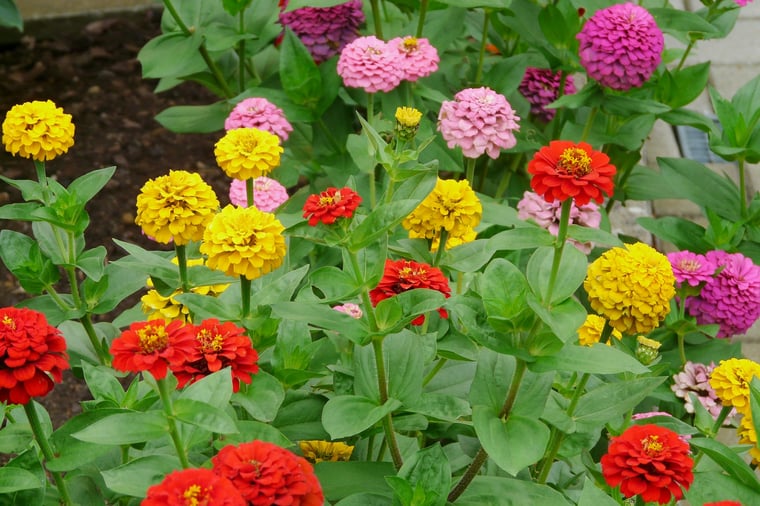
Annuals like these zinnias provide beautiful color and are great pollinators.
Photo from 123rf.com
These plants tend to be easy to grow and are adapted to many different climates. Some species prefer to grow in the cool season, especially here in the southeast where we can garden 12 months of the year. Others thrive in the heat of the summer. There really is no end to the opportunities that annuals offer from striking colors, to being a nectar source for pollinators, and of course my favorite, providing abundant harvests.
One of the things I love most about annuals is the fact that they die! They do not cause me long term work and I get to reinvent the space each season with a different pallet of plants. I LOVE PLANT SHOPPING and using a base of annuals allows me to shop twice a year! They also provide me with instant color and texture - have you noticed my obsession with coleus??? Bottom line, I do not want to ever garden without annual plants.
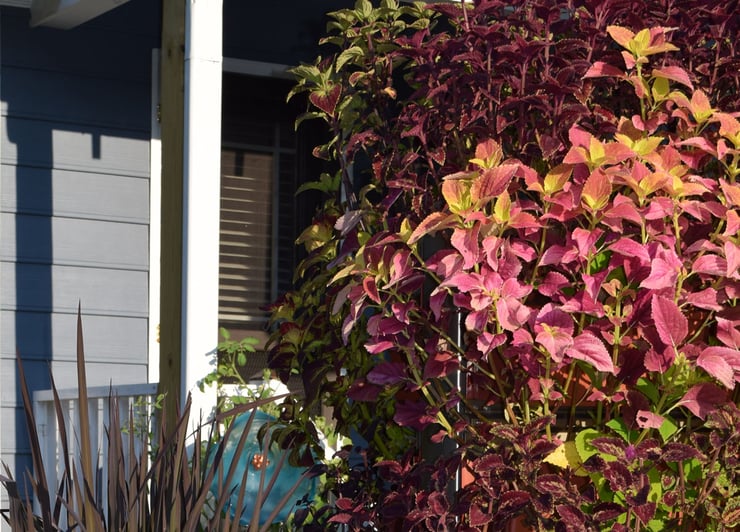 The LiveScreen planted with Coleus thrives in Soil³.
The LiveScreen planted with Coleus thrives in Soil³.
There are a bunch of plants that we categorize as annuals, but in fact they are not. Take for example, coleus and plectranthus, my favorite summer foliage plants. They are not hardy here in USDA Zone7b, so yes, they die with frost. But in warmer climates, they are, in fact, perennials. This element of climate tolerance adds to the general confusion revolving around annual/perennial plant selection.
Perennials
In contrast, perennial plants are “hardy” and do not die after one growing season, or at least they are not supposed to. (Another famous quote from the owner of Plant Delights Nursery, Mr. Tony Avent, “I consider every plant hardy until I have killed it at least 3 times.”) In theory, the idea of perennials is appealing. You buy and plant them one time and like magic they return year after year. One and done, right?
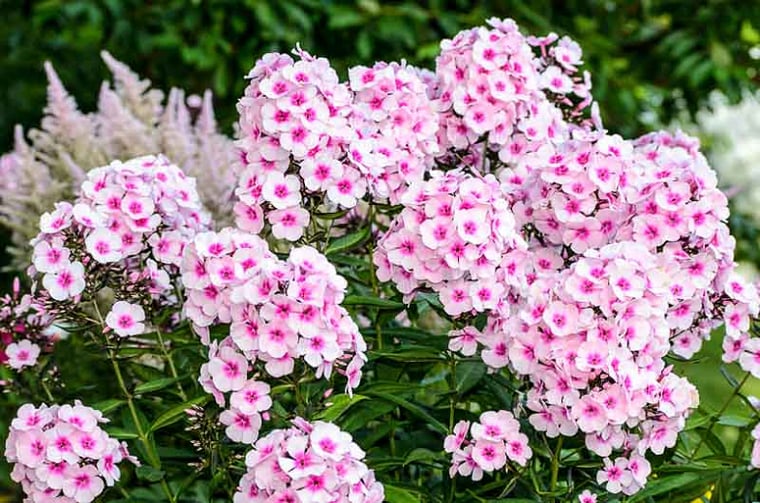 Phlox paniculata, though beautiful, does have its drawbacks.
Phlox paniculata, though beautiful, does have its drawbacks.
In my early days as a home gardener, I bought into this idea hook line and sinker. But then I realized that not all perennials are well behaved. They can seed around, or worse, they can spread from underground rhizomes or above ground stolons, creating giant colonies that consume your garden and crowd one other out. The long-term management of spreading perennials can become a nightmare. For your amusement, you can view a recent rant of mine in this video:
I think it is fair to say that not all perennials are bad, but vigorous spreaders like that horrible Ruellia brittoniana that has invaded my foundation landscape are! Before you indulge in a landscape full of perennials, do your research and make sure to avoid badly behaved species.
Here is a short list of a few of my NEVER PLANT AGAIN perennials:
-
Colocasia ‘Black Runner’ - just as its name indicates, this spreads EVERYWHERE from rhizomes and stolons.
-
Phlox paniculata ‘Bright Eyes’ - a gorgeous, pollinator magnet, but it seeds AND spreads from rhizomes.
-
Physostegia virginiana - the “disobedient plant” spreads like wildfire from rhizomes.
-
Rudbeckia fulgida - seeds like crazy, assisted by birds.
-
Ruellia brittoniana - spreads from rhizomes and roots deep, making it difficult to dig out.
Enjoy the Best of Both
I want to encourage you to grow the plants that bring you joy, regardless of the category they fall into. The more you know the better your garden will be, and the idea of “right plant, right place” will always be true. In my case, I put these vigorous perennials in the wrong place, and they took advantage of it. Now that I know better, I choose spreading perennials for spaces that have lean soil and less irrigation, to help slow their spread. And I concentrate on growing annuals, both flowering and edible, in the spaces that get more care. This way I can have the best of both worlds.
Summer 2020 in a Nutshell
It started off cool and slow, which annoyed me because the cool season plants just wouldn’t stop! Then the heat set in, but like some sort of miracle, I started getting near daily rain showers. It was like Florida - raining every day between 4-6 pm. All that moisture led to GORGEOUS plants, so I am not complaining at all and I am sorry for everyone who did not get to enjoy regular rainfall this summer.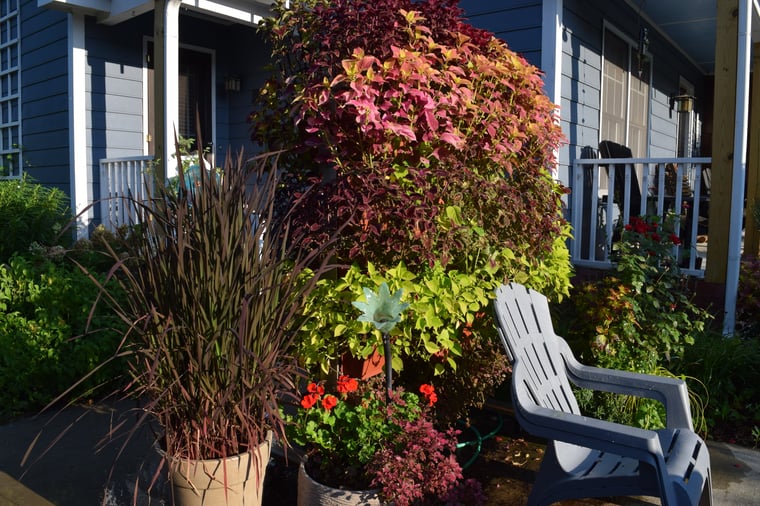
Frequent rains provided plenty of moisture for growing plants.
The downside was that I continuously felt off schedule. I spent half the summer fretting about not getting my corn planted “in time” and the other half freaking out about not seeing butterflies. I think this may be a condition of “too much time on my hands.” Then, like magic, in early August, the swallowtails and monarchs showed up and my corn started growing a foot a week. The lesson is, take life as it comes and stop worrying so much. Easier said than done, but as always, I am a work in progress.
Failures of the Season
Let’s start with reality. NOT ALL PLANTS GREW WELL. I like to blame the region and/or the climate instead of assuming all responsibility, though I have killed my fair share of plants from over planting and neglect, have no doubt. This year was no exception. All that rain made some plants very unhappy, leading to disease issues including powdery mildew, bacterial wilt, and all the blights. You can’t win them all, right?
- Tomatoes in the ground: This year early blight showed up first, but quickly root knot nematodes sprang into action, killing at least 45 plants in 3 weeks’ time. I was shocked and dismayed to watch the F1 hybrids that were supposed to be disease and RKN resistant succumb one after another. At some point I will lose interest in cultivating tomatoes in this former tobacco field- I may have reached that point this year…. Ha ha, not really! I already placed an order for tomato seed!
-
Summer front yard grain planting: I had high hopes for a dynamic display of corn, sunflowers, okra, sweet potatoes, and peanuts only to realize a few weeks after sowing that this bed is now too shady in the summer. It still works for winter grains, because the leaves are off the trees, but in summer, this bed is now squarely part-shade and thus not the right area to grow any of the things I planted. Additionally, the resident rabbits and deer had an actual buffet to eat from every single night. The plants that did grow there were dwarfed from regular munching. I have to rethink this planting area for 2021.
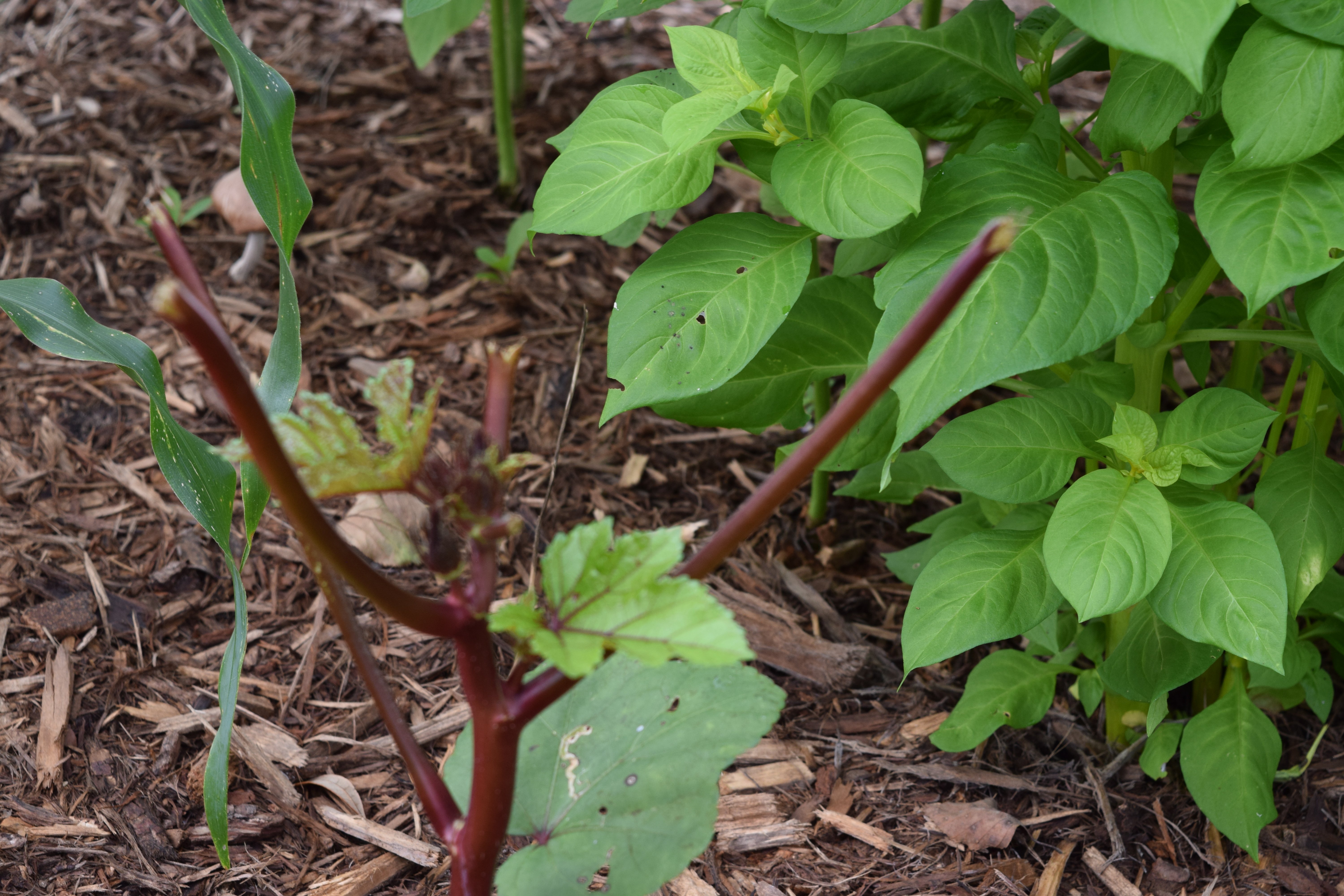
The shady front bed - the corn didn't grow well and the deer ate the okra. -
Daikon Radish self-sowing EVERYWHERE: OMG, I created a monster when I decided to use daikon radish as a winter cover crop and then let it go to seed. I naively thought that is was a cool season annual and would not sprout and grow through the heat. I WAS WRONG. I have spent more time in the past 3 months on my hands and knees pulling out radishes than I want to admit. I still think daikon radish are a great cover crop, especially to add aeration to hard packed soils. But my lesson learned is to not allow them to go to seed. Harvest them, or cut them down early, otherwise you may unleash a beast, just like I did. Another lesson here is that all these self-sown radishes have helped feed the largest population of cabbage worms (in every lifecycle) that I have ever witnessed. It feels like it will be impossible to cultivate my favorite heading veggies like broccoli, cabbage, and cauliflower after this big mistake.
Summer Successes Thanks to Soil³
Now on to the good stuff! The one common denominator in all my summer successes is Soil³. Its because of that quality compost that my plants thrive, and I don’t have to add very much fertilizer or constantly irrigate. I use Soil³ for everything: all my containers, including vertical systems and hanging baskets, as well as in-ground plantings are grown in it.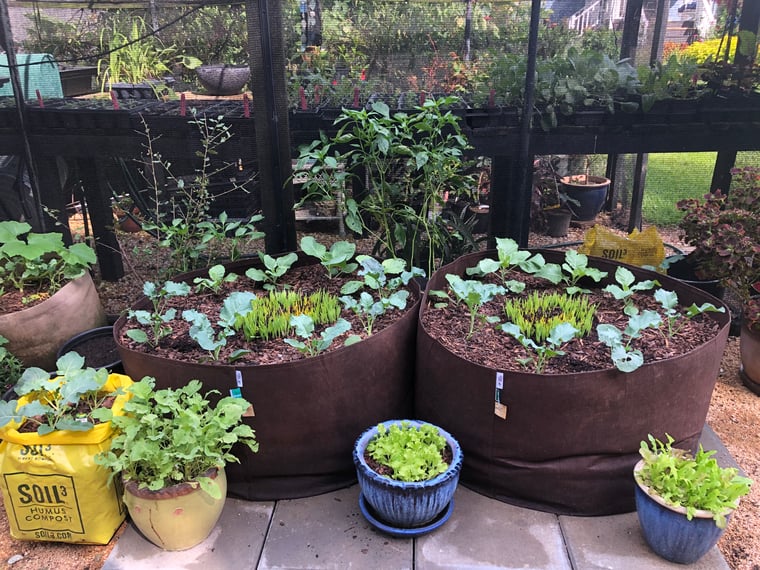
The Soil³ Raised Garden Kit includes two 100-gallon Root Pouches. I had an amazing summer harvest of cucumbers in these and now they are replanted for fall.
-
Cucumbers (and more) in 100-gallon Root Pouches: I am a total convert to gardening in these 100-gallon Root Pouch raised beds. I was impressed last spring with my most successful broccoli harvests but had some doubts about the summer crops. Not only did ALL the plants thrive, they produced beyond my wildest dreams. I learned how to make pickles because of these Root Pouches!
-
Heirloom tomatoes growing in Mini Cubes of Soil³: Admittedly, this seemed like a long shot, but sure enough these were some of the last tomatoes to stop growing this season and that was because wind broke the stems! I grew ‘Costuleto Genovese’, an old Italian heirloom that I covet but rarely get to fruit. Thanks to this REALLY EASY approach to growing, I had a bumper crop! I have these Mini Cubes re-planted with broccoli now.
-
Growing rice in containers with no holes: This is the solution for growing rice. Sure, you can grow it in the ground, but if you want a beautiful, low maintenance display of grass that blows in the breeze, toss some rice seed in a pot with no holes filled with Soil³ and walk away. I kept my pots filled with water all summer - and boy did the plants respond. They grew to about 4’ tall and looked amazing all season. The best part is the pots don’t drain, so you can have these on a wooden deck and not worry about rotting boards. Another bonus was my kitten, Miss Ava Grace loves taking naps in these and looks awfully cute curled up in her rice nest.
-
Living wall filled with Soil³: This vertical system with integrated irrigation has been a highlight from the moment it was delivered 4 years ago, but once I started using Soil³ as the potting media the plants grew even better! I say this all the time, but this LiveScreen is the only true “low maintenance” thing in my home garden.
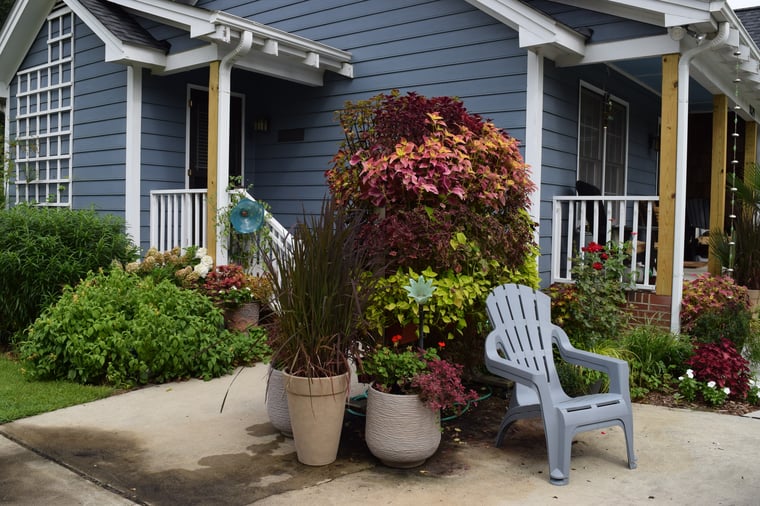
It gets planted twice a year - in April with colorful coleus and in October with cool season veggies and flowers. In between I simply enjoy looking at, using it as a backdrop for selfies and generally admiring it from my kitchen door. One day I hope every home and business will have at least one of these, because this system truly makes growing easy.
Best Investment - The Feed Tank
Perhaps my favorite success this summer was the feed tank and surrounding plantings. It is important to give credit where it is due, and the feed tank was one of the best ideas my husband has ever had. I know it may sound odd, but if you aren’t really into swimming but you would like to cool off in your backyard, a feed tank may be a better option than a traditional swimming pool.
We got ours from Tractor Supply and it is approximately 8’ wide and 3’ deep. It is the perfect size to sit down in and savor a cold beverage, or even drift away on a float. And with all the time spent at home in 2020, we have definitely enjoyed it.
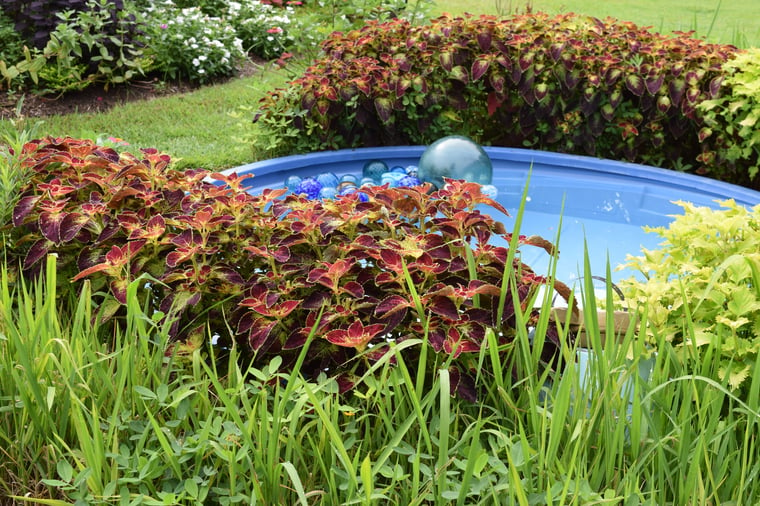
The feed tank's versatility lends itself so well to the garden design that surrounds it.
The thick blue plastic looks “pool-like” and has held up wonderfully through high heat and extreme cold over the past 3 years. It was easy to modify and add a pump and filter. We keep it chlorinated and I vacuum it regularly, just as you would a normal pool. Best part is we invested only $500 in the whole set up!
The big difference with the feed tank is that when the heat ends, and no one needs to cool off, we add a fountain to the middle and call it a water feature. With hand-blown glass balls floating about, it almost looks like a Chihuly exhibit in our back yard. It is this versatility that lends itself so well to the garden design that surrounds it.
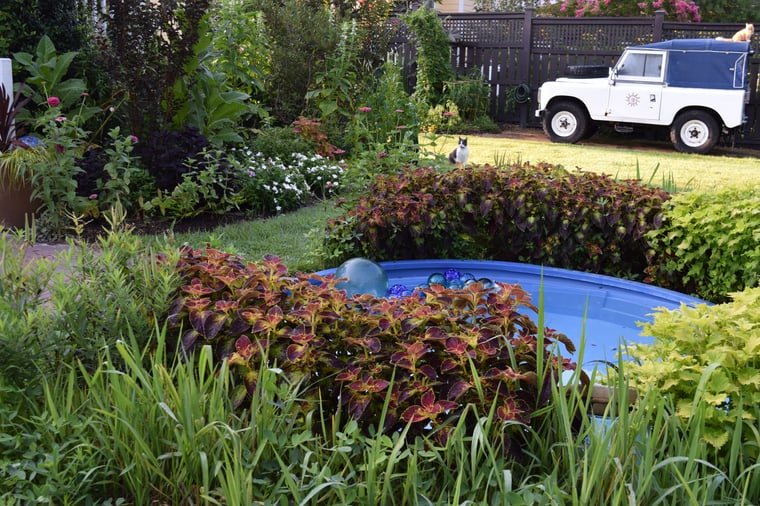 Hand-blown glass balls floating about add interest.
Hand-blown glass balls floating about add interest.
The planting scheme changes seasonally, so I focus on growing bold annual plants in this bed. However, I do have 4 large clumps of the perennial “butterfly weed” Asclepias tuberosa to help feed the monarch caterpillars. This summer the bed came to life with a simple planting of coleus, direct seeded rice, and peanuts as a groundcover. All these sun loving annuals thrived and provided me with material for cut arrangements as well as delicious harvests.
Looking to Next Year
Clearly, I am a planner, and note taking is second nature for me. (Remember I shared my notes on successes at the end of summer last year as well.) I also enjoy taking photos and posting to social media to share my successes and failures and, most importantly, to get insights from other gardeners.
A few plants that I was missing this year included cosmos and marigolds. Those are already on order! I would also like to grow more melons in the 100-gallon Root Pouches filled with Soil³, since I now have five of them! More coleus and plectranthus are a must, and next year I will expand my sunflower display.
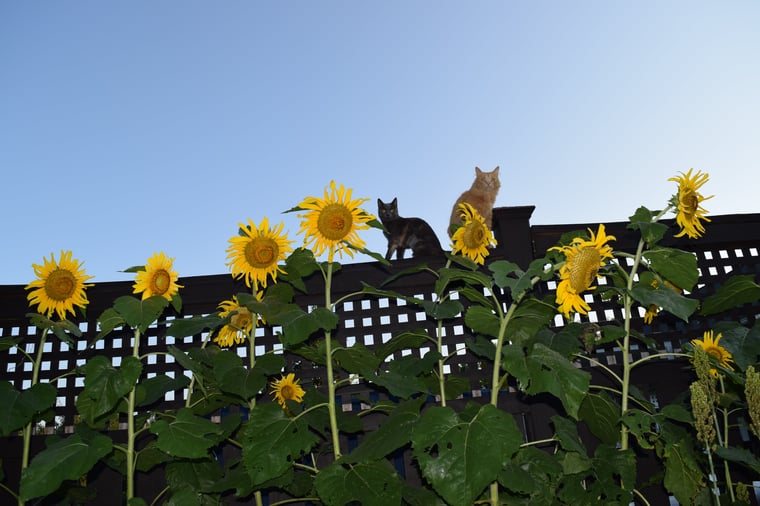 Looking forward to more sunflowers next year. Don't miss the cats hiding in the sunflowers!
Looking forward to more sunflowers next year. Don't miss the cats hiding in the sunflowers!
I hope you had a successful summer season and are noting all the things you would like to grow in the coming year! Now is the ideal time to start planning, ordering seeds, and dreaming, because in the garden hope springs eternal.
Happy Gardening!
Brie
All photos by Brie, unless otherwise noted.
Related Posts

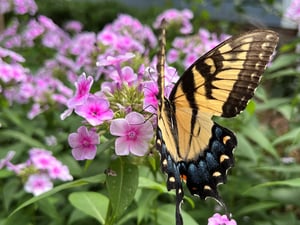
Five Awesome Plants for Summer
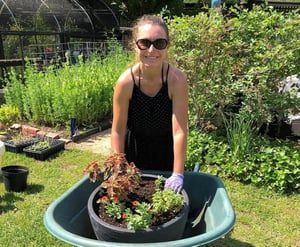
Summer Container Planting in Soil3
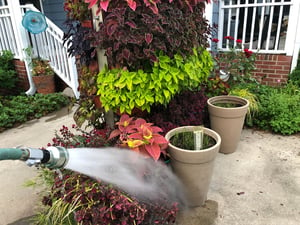
Best Practices for Watering your Garden

Brie's Gardening Ideas for September
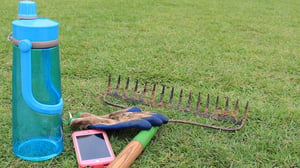
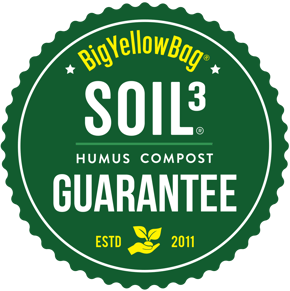
Did this help you out? Have any questions for clarity? Leave a comment below!